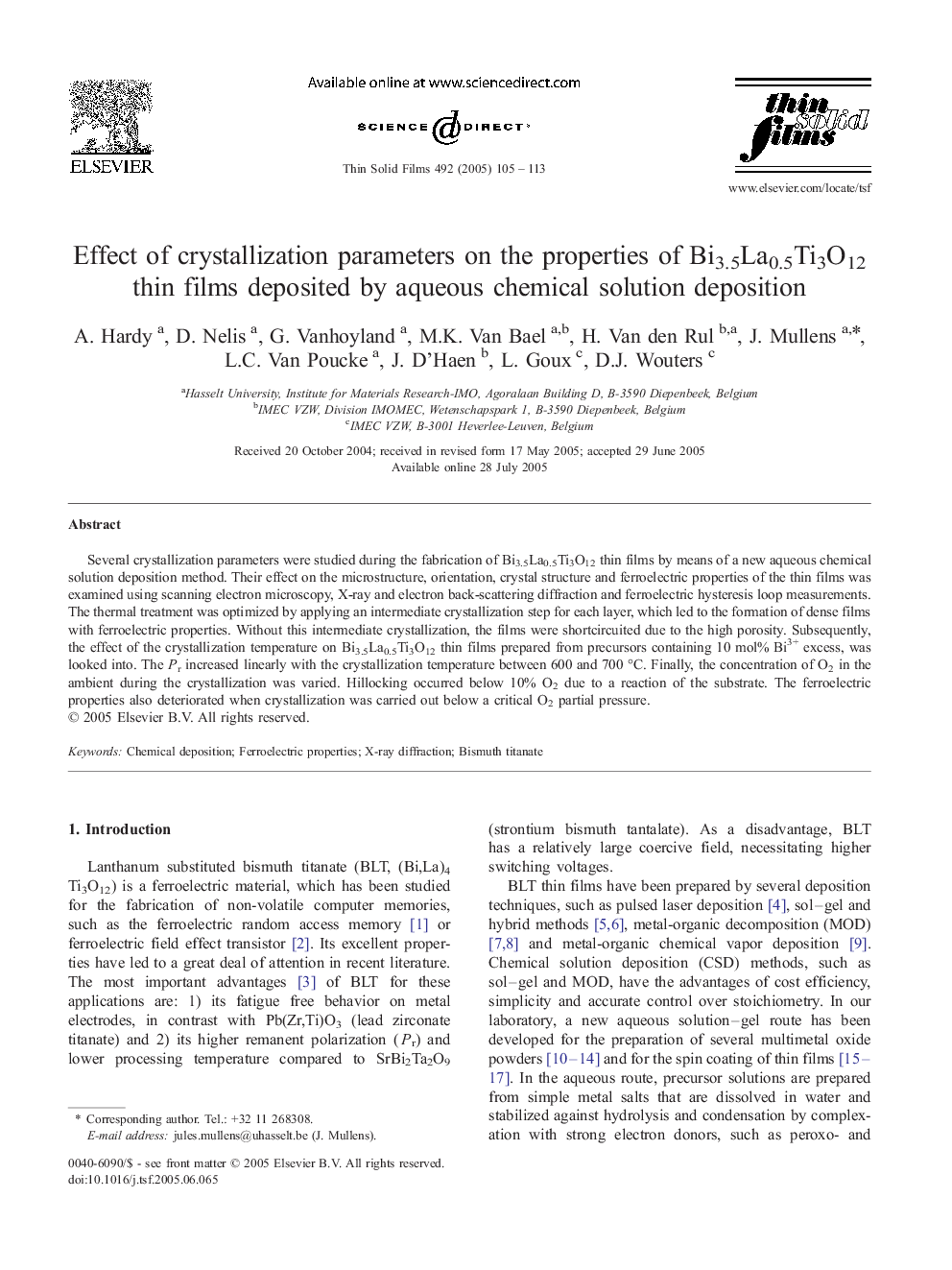| Article ID | Journal | Published Year | Pages | File Type |
|---|---|---|---|---|
| 9812125 | Thin Solid Films | 2005 | 9 Pages |
Abstract
Several crystallization parameters were studied during the fabrication of Bi3.5La0.5Ti3O12 thin films by means of a new aqueous chemical solution deposition method. Their effect on the microstructure, orientation, crystal structure and ferroelectric properties of the thin films was examined using scanning electron microscopy, X-ray and electron back-scattering diffraction and ferroelectric hysteresis loop measurements. The thermal treatment was optimized by applying an intermediate crystallization step for each layer, which led to the formation of dense films with ferroelectric properties. Without this intermediate crystallization, the films were shortcircuited due to the high porosity. Subsequently, the effect of the crystallization temperature on Bi3.5La0.5Ti3O12 thin films prepared from precursors containing 10 mol% Bi3+ excess, was looked into. The Pr increased linearly with the crystallization temperature between 600 and 700 °C. Finally, the concentration of O2 in the ambient during the crystallization was varied. Hillocking occurred below 10% O2 due to a reaction of the substrate. The ferroelectric properties also deteriorated when crystallization was carried out below a critical O2 partial pressure.
Related Topics
Physical Sciences and Engineering
Materials Science
Nanotechnology
Authors
A. Hardy, D. Nelis, G. Vanhoyland, M.K. Van Bael, H. Van den Rul, J. Mullens, L.C. Van Poucke, J. D'Haen, L. Goux, D.J. Wouters,
